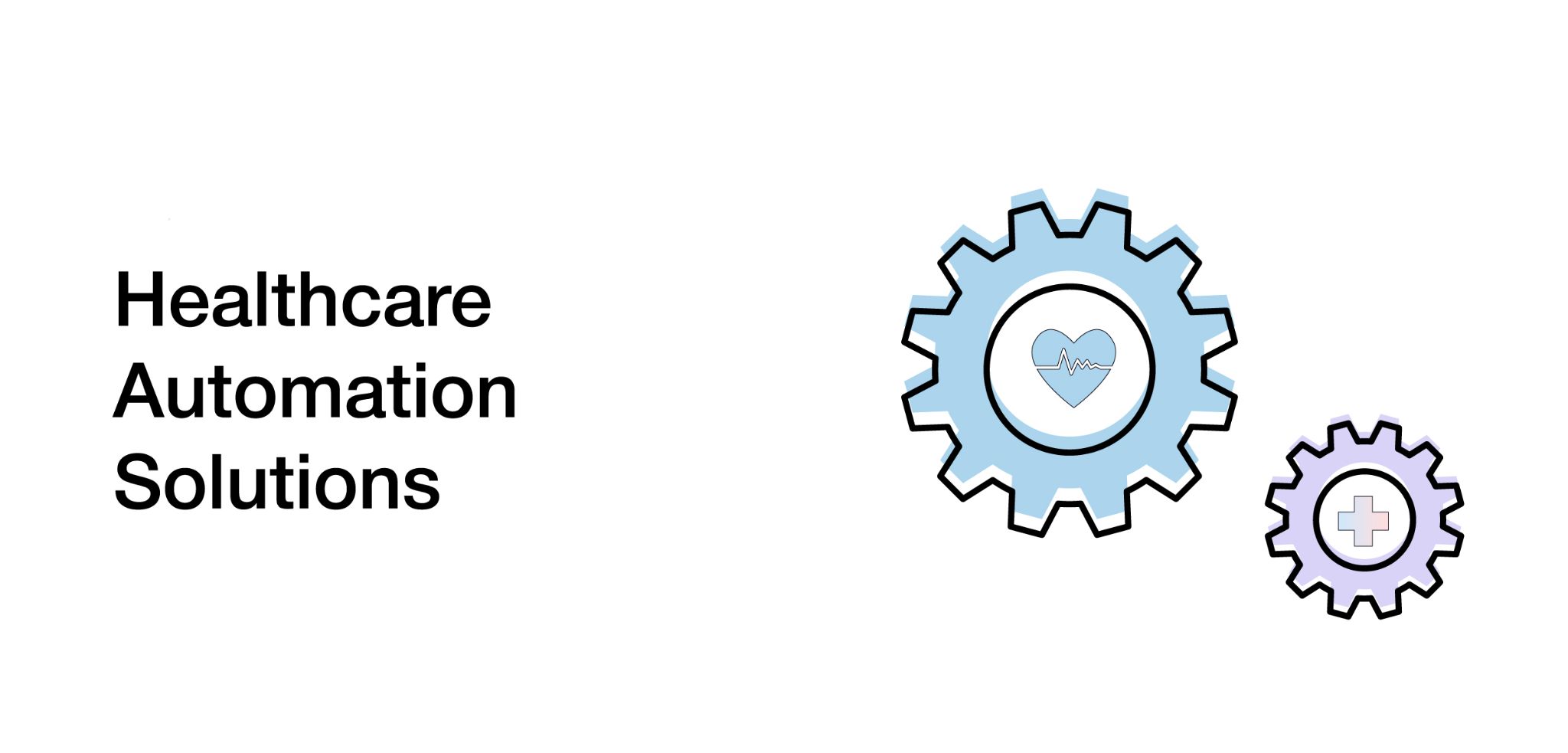
In the modern healthcare ecosystem, data serves as a strategic driver, enabling operational excellence across the entire spectrum of business functions, from sales and onboarding to claims processing, while ensuring adherence to critical compliance obligations.
Yet, for many healthcare insurance enterprises, data remains fragmented, inconsistent, and confined within siloed systems. This not only hampers operational efficiency but also presents significant challenges in maintaining compliance and meeting evolving regulatory requirements.
Recent industry insights reveal that 76% of insurers who invest in robust data management practices report a measurable improvement in operational performance — reinforcing the vital role of intelligent data management in achieving business agility and regulatory readiness.
Healthcare insurers can fully harness the power of their data and transform it into a competitive advantage by adopting an automation-first strategy. This approach involves implementing modern healthcare solutions that unify and streamline data workflows while embedding compliance into every process — ensuring accuracy, accountability, and agility at scale.
This blog explores how next-generation healthcare automation solutions are transforming data management, driving operational efficiency and ensuring regulatory compliance.
Key Highlights
- Challenges of managing complex and fragmented data in healthcare insurance.
- Role of healthcare automation in streamlining data management, elevating operational efficiency and strengthening regulatory compliance.
- Key factors for choosing the right automation solution
- Best practices to consider while implementing automation in the healthcare sector.
Challenges of Data Management in Healthcare Insurance
In an industry where accuracy, speed, and compliance are paramount, healthcare insurance enterprises navigate the complex challenge of managing an ever-growing volume of healthcare data flowing through a vast network of systems and stakeholders.
While this data has the potential to drive smarter operations and informed decision-making, outdated tools and manual processes often turn it into an obstacle rather than an asset.
Below are some of the key data management challenges faced by healthcare insurance enterprises :
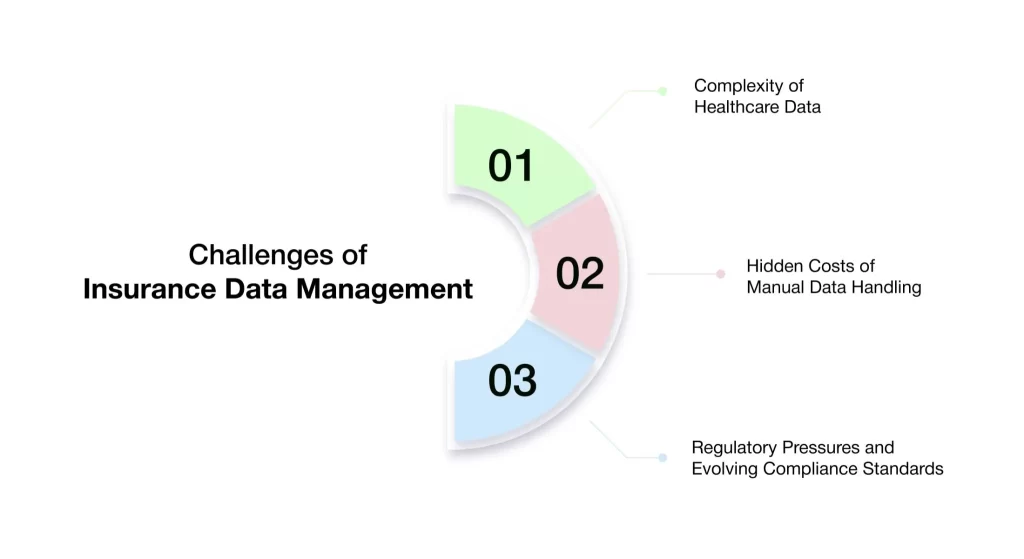
- Complexity of Healthcare Data
Healthcare insurance enterprises are responsible for managing a diverse range of data types, including claims, member eligibility records, provider contracts, billing information, authorizations, explanations of benefits (EOBs), and pharmacy benefit details. These data sets originate from a wide array of sources such as hospitals, provider networks, laboratories, pharmacy benefit managers (PBMs), government agencies, and even the members themselves.
However, each of these sources speaks a different ‘data language,’ adhering to its own formats, structures, and update cycles. As a result, the enterprise is left with a fragmented data environment that is difficult to integrate into a single, accurate, and trusted source of truth.
Such fragmentation introduces a host of operational challenges—from delayed or inaccurately adjudicated claims, to provider payment backlogs, to members receiving outdated or inconsistent benefit information. Moreover, it degrades the overall member experience and exposes insurers to increased risks of compliance breaches and costly financial penalties.
- The Hidden Costs of Manual Data Handling
Although the healthcare insurance industry has made significant strides in digital transformation, many insurers continue to rely on outdated workflows – utilizing spreadsheets, manual data entry, and siloed legacy systems to manage essential data.
Modernizing these legacy systems is often resource-intensive, and integrating new technologies can involve steep costs and complex challenges. Consequently, teams are forced to manually bridge the gap, transferring data between platforms, validating entries by hand, and patching broken workflows to keep operations running.
Manual data handling is not only inefficient but also introduces considerable risk. Human errors can result in incorrect claims, billing inconsistencies, and inaccurate member records. Such errors lead to processing delays that further hinder timely provider payments and customer service. Moreover, compliance breaches due to incomplete or outdated information expose insurers to costly audits and penalties.
Collectively, these operational challenges create ripple effects across the enterprise—escalating costs, undermining member trust, and impeding business growth.
- Evolving Regulatory Pressures & Compliance Standards
In the highly regulated healthcare insurance landscape, compliance is not optional—it is a fundamental imperative. Payers must adhere to stringent regulatory frameworks, including HIPAA, SOC 2, HITRUST, and various state-specific requirements. These regulations govern every aspect of member data management, from secure storage and controlled sharing to comprehensive reporting and thorough auditing.
Moreover, these regulations are constantly evolving, with new privacy laws, reporting standards, and audit protocols emerging regularly. Without real-time visibility and centralized control over enterprise data, maintaining compliance across fragmented, siloed systems becomes increasingly difficult—and potentially costly.
Non-compliance carries significant consequences, including legal disputes, prolonged audits, erosion of trust among members and partners, delays in achieving key accreditations, and damage to brand reputation and competitive standing.
To stay ahead, enterprises need more than manual processes and static documentation—they require automation-driven data management to monitor, enforce, and report compliance in real time.
The Role of Automated Healthcare Solutions in Data Management Platforms
To overcome the challenges of managing complex, fragmented, and highly regulated data in healthcare insurance, enterprises must adopt advanced automated data management platforms.
These platforms continuously collect and unify data from multiple sources and systems, while validating and cleansing records to ensure accuracy and consistency. By applying real-time compliance logic, the platforms flag anomalies and maintain audit readiness. Additionally, they track data changes and generate reports aligned with evolving regulatory standards.
By leveraging these automation platforms, payers can not only streamline enterprise data management but also enhance operational agility and strengthen regulatory compliance.
- Streamlining Data Collection, Validation And Integration
Effective healthcare insurance data management is about more than just storage—it requires real-time collection, intelligent validation, and seamless synchronization across diverse systems. Here’s how automation is driving meaningful transformation at each stage:
- Real-Time Data Collection from Disparate Systems
Healthcare insurance enterprises manage vast volumes of data originating from a wide range of internal and external systems—including provider portals, hospital systems, government databases, pharmacy networks, EDI feeds, mobile applications, and wearable devices. With each system using different formats, update frequencies, and data standards, collecting and standardizing this fragmented data into a consistent and usable form poses a significant operational challenge.
Automation help enterprises overcome this complexity by seamlessly integrating with diverse data sources, standardizing formats in real time, and channeling information into a unified, accessible data pipeline. As a result, insurers can consistently operate with clean, current, and consistent data—accelerating workflows, reducing integration overhead, and enabling more informed, confident decision-making across the enterprise.
- Intelligent Data Validation for Compliance and Accuracy
As healthcare insurance enterprises consolidate increasing volumes of data from disparate sources, they must overcome the critical challenge of ensuring data accuracy and regulatory compliance.
Automation addresses this challenge by systematically validating incoming data against established business rules, regulatory requirements, and contractual obligations. This intelligent validation significantly reduces errors—such as duplicate claims, incomplete member information, or inaccurate coding—that can otherwise cause processing delays and elevate compliance risks.
By embedding these validations directly into automated workflows, enterprises can accelerate claim processing with greater accuracy, while simultaneously minimizing operational risks and safeguarding member trust.
- Seamless Data Integration for Strategic Insights
Effective decision-making in healthcare insurance relies on a unified, comprehensive view of data dispersed across multiple systems—including claims processing, customer relationship management, billing, and analytics.
Automation enables seamless data integration by consolidating validated information from different sources into a centralized repository. This integrated data environment eliminates inconsistencies and fragmentation, providing insurers with real-time, accurate insights that enable more informed and timely decisions. Ultimately, such a cohesive data infrastructure enhances operational efficiency, strengthens compliance, and drives innovation in healthcare insurance service delivery.
- Elevating Operational Efficiency
For healthcare insurers, managing large volumes of complex, regulated data across fragmented systems often leads to inefficiencies and delays. Automation eliminates these bottlenecks by streamlining workflows, reducing manual errors, and accelerating decision-making—driving measurable improvements in claims processing, eligibility verification, member engagement and more.
Here are key ways these platforms enhance operational efficiency across healthcare insurance enterprises :
- Accelerated Claims Processing
Claims processing is often slowed by manual data entry, inconsistent information, and repetitive verification, leading to delays and increased costs. Automation tackles these issues by standardizing and validating data at the point of entry, minimizing manual intervention and eliminating redundant checks. This streamlines workflows, speeds up claim adjudication, and improves cash flow.
- Real-Time Eligibility Verification
Verifying member eligibility through manual processes can be slow and prone to errors, causing service delays and administrative bottlenecks. Automated platforms instantly cross-reference data across multiple sources, providing accurate and up-to-date eligibility information in real time. This accelerates verification workflows, reduces errors, and ensures members receive timely access to benefits, enhancing operational efficiency and customer satisfaction.
- Improved Provider Network Management
Managing provider contracts, credentials, and performance data across different systems can cause delays and errors. Automation brings all provider information into one place, making it easier to update records, renew contracts, and track performance quickly. This helps ensure a reliable provider network, reduces paperwork, and strengthens relationships with providers.
- Enhanced Member Engagement
Clear and timely communication is crucial to keeping members satisfied. Automation brings together member data from different sources to send accurate, personalized messages about claims, benefits, and plan updates quickly. This improves the member experience and lowers the number of support queries.
- Strengthening Regulatory Compliance
In the face of evolving regulatory demands, healthcare insurers must maintain rigorous compliance while keeping operations efficient. Automation delivers a smart, scalable approach to compliance management—simplifying complex manual processes into streamlined, accurate workflows. Here’s how automation reinforces compliance in healthcare insurance:
- Embedded Regulatory Enforcement
Automation allows insurers to embed compliance rules—such as HIPAA, SOC 2, and HITRUST—directly into day-to-day operational workflows. From claims intake to reporting, every step is automatically validated against regulatory standards. This reduces manual checks, minimizes errors, and gives compliance teams confidence that all processes meet industry requirements.
- Real-Time Monitoring And Notification
Automated platforms continuously monitor critical data flows and operations, sending real-time alerts to compliance and IT teams when anomalies, policy violations, or suspicious activities occur. This proactive approach lowers risk, speeds up issue resolution, and ensures the enterprise stays prepared for regulatory changes.
- Simplified Audit Trails and Documentation
Automation creates a secure, centralized log of all user actions, data changes, and workflow activities. These audit trails support regulatory compliance, enhance transparency, and make it easy to demonstrate accountability during audits—eliminating the need for time-consuming manual tracking.
- Predictive Risk Management
AI-driven automation continuously monitors historical and real-time data to identify early signs of compliance risk—like repeated claim denials, inconsistent entries, or unusual system access.This proactive approach allows insurers to address issues before they escalate, reducing risk and improving operational integrity.
What To Look for in Healthcare Automation Solutions?
Choosing the right automation platform goes beyond simply digitizing manual tasks.
It’s about enabling smarter operations, improving regulatory responsiveness, and fostering seamless collaboration across teams. For healthcare insurers, the ideal solution must be designed to handle the industry’s complexity, scale, and strict compliance demands.
Here are four key capabilities to look for :
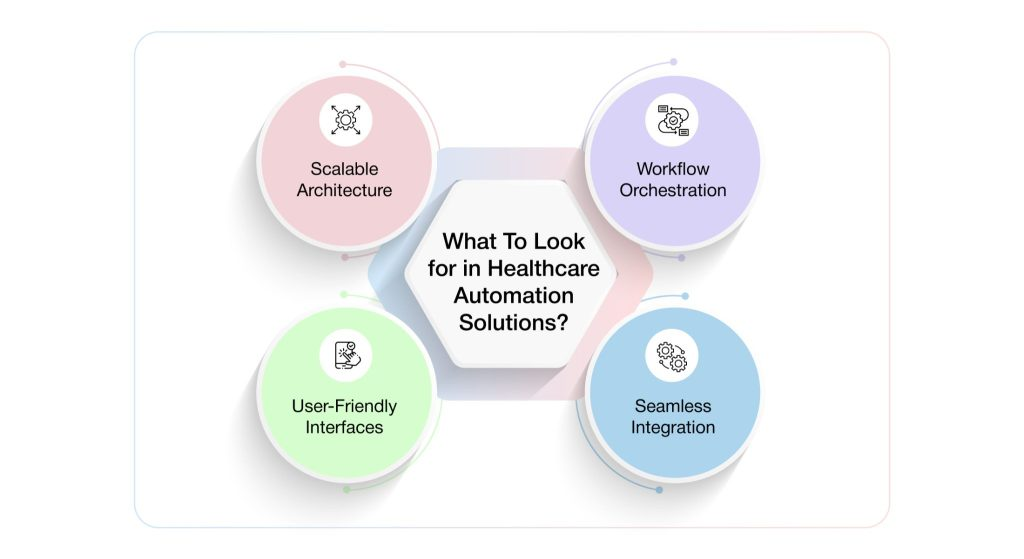
- Workflow Orchestration Across Core Insurance Functions
Modern automation goes beyond basic task execution—it intelligently orchestrates workflows across key business functions such as claims, member services, provider relations, and compliance. By routing tasks based on predefined rules, urgency, or exceptions, it eliminates manual handoffs, reduces delays, and ensures accuracy at every step. This leads to fewer errors, greater efficiency, and smoother operations across the enterprise.
- Seamless Integration with Legacy and Modern IT Systems
Most insurers operate within complex ecosystems that include legacy systems such as claim adjudication engines, member databases, and third-party portals—many of which can’t be easily replaced. An effective healthcare automation solution must integrate seamlessly with both modern and legacy platforms, without disrupting core operations.This ensures continuous data flow, maintains data quality, and enables transformation without the need for costly system overhauls.
- User-Friendly Interfaces with Robust Training Support
Not every team in a healthcare insurance enterprise has technical expertise—which is why leading automation platforms prioritize simplicity and ease of use. With intuitive interfaces, user-friendly dashboards, and streamlined workflows, these platforms enable quick adoption across all business operations teams. By offering seamless onboarding and robust training support, they help reduce adoption barriers, accelerate implementation, and empower users to work confidently—without ongoing reliance on IT support.
- Scalable Architecture That Evolves with Regulatory Demands
Healthcare insurance regulations are constantly evolving, and automation platforms must be flexible enough to keep up. They should be built on modular, scalable architectures that can easily adapt to future compliance requirements—such as CMS updates, HIPAA changes, and state-level mandates—without costly reconfigurations. Scalable systems not only protect an enterprise’s investment but also reduce time-to-compliance and lower long-term operational costs.
What Are The Best Practices for Implementing Healthcare Automation?
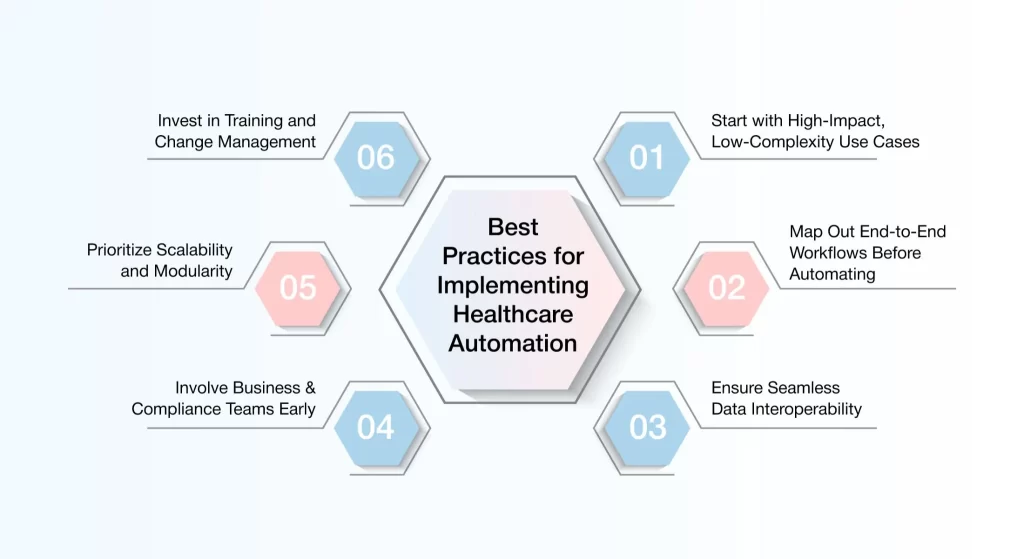
Implementing healthcare automation is not just about selecting the right technology—it’s about enabling lasting transformation across people, processes, and systems. To unlock the full benefits of automation in healthcare insurance, enterprises must adopt a thoughtful and strategic approach. Below are the best practices that ensure successful implementation :
Start with High-Impact, Low-Complexity Use Cases
Begin by automating repetitive, rule-based tasks that are simple to implement but deliver clear, measurable impact—such as eligibility verification, claims sorting, or member onboarding. These early quick wins help demonstrate value, build momentum, and establish a strong foundation for scaling automation across the enterprise.
Map Out End-to-End Workflows Before Automating
Avoid the mistake of automating inefficient processes. Before implementation, ensure to conduct a thorough review of current workflows and redesign them where needed. Gain a clear understanding of the complete process—including handoffs, data inputs, and exception handling—so automation is built to streamline operations, not simply replicate existing ones.
Ensure Seamless Data Interoperability
Effective automation depends on clean, connected data. Invest in strong data governance, validate data quality, and ensure your automation platform integrates with both legacy and modern systems. This creates a unified, accurate data foundation to support automated workflows across the enterprise.
Involve Business & Compliance Teams Early
Successful automation requires cross-functional alignment right from the start. Engaging business users, compliance teams, and frontline staff early in the process ensures shared understanding of goals, workflows, and regulatory requirements such as HIPAA and HITRUST. Their input helps shape effective, compliant solutions—reducing risk, avoiding rework, and supporting smoother implementation.
Prioritize Scalability and Modularity
Select solutions for automation that can scale with your evolving needs—whether it’s managing higher claim volumes, adapting to new regulatory requirements, or expanding across functions. A modular architecture enables incremental, strategic deployment, ensuring flexibility and long-term value.
Invest in Training and Change Management
Even the highly advanced technology can fall short without user adoption. Equip teams with the right training, engage cross-functional champions, and foster a culture where automation is embraced as a tool for empowerment—not disruption. Ensuring users understand and trust the automation solution is key to long-term success.
VIZCare Empower: Offering AI-Powered Healthcare Technology Solutions
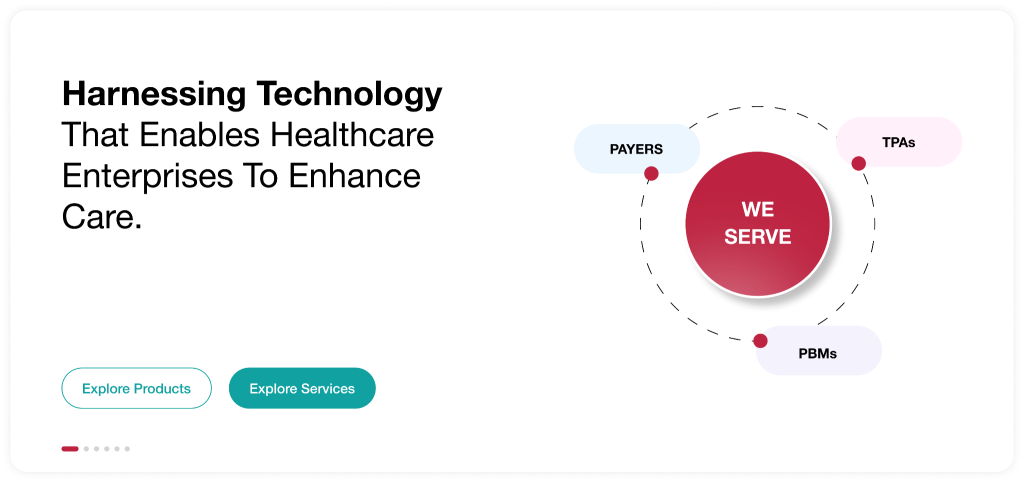
AVIZVA is a healthcare technology company that empowers payers, TPAs, and PBMs to enhance care delivery through a comprehensive suite of engineering products and services. With over 14 years of experience in leveraging technology to simplify, optimize, and accelerate care, AVIZVA has become a trusted technology partner to a wide range of healthcare enterprises.
AVIZVA’s healthcare offerings are grouped into two key categories: Engineering Services and its proprietary product suite, VIZCare. Each product within VIZCare is purpose-built to address specific business challenges in healthcare. A flagship product in this suite is VIZCare Empower—an AI-enabled, one-stop platform that automates and streamlines end-to-end healthcare business operations, enhancing efficiency, compliance, and scalability. Some of its core capabilities include :
- End-To-End Sales Management
VIZCare Empower gives teams real-time visibility into broker activities, progress, and support needs—enabling timely, personalized assistance, faster deal closures, and improved broker satisfaction. The platform streamlines the entire broker journey, from quoting and contract signing to enrollment, all within a single, unified interface.
- Business Process Automation and Workflow Management
VIZCare Empower offers an intuitive drag-and-drop interface, allowing healthcare teams to build and modify workflows without technical expertise. It integrates with existing systems and scales effortlessly with the business. As needs evolve, teams can quickly update workflows to stay agile and efficient.
- Seamless Onboarding of Groups and Individuals
VIZCare Empower streamlines end-to-end onboarding for new clients and employer groups. With intuitive tools, automated configurations, and seamless workflows, it eliminates manual steps, shortens setup time, and helps teams onboard clients smoothly from the start.
- Single Pane to Service All Consumers
VIZCare Empower centralizes all the critical data, tools, and context that service teams need to manage and support every consumer—whether they’re members, providers, brokers, or employers. It eliminates silos and unites all service teams in one place, enabling them to deliver personalized, efficient, and proactive assistance with ease.
- AI-Enabled Contact Center Management
VIZCare Empower creates a better experience for both contact center agents and customers. It equips agents with real-time guidance and intelligent insights, helping them resolve customer inquiries faster and more accurately. Whether they’re handling complex claims for providers, supporting brokers, or managing member issues, the platform delivers instant recommendations, knowledge base access, and next-best-action prompts.
- Timely and Hassle-Free Renewal Management
VIZCare Empower simplifies and streamlines the renewal process. With automated reminders, real-time data access, and optimized workflows, it enables teams to manage renewals more efficiently—reducing manual errors and enhancing overall accuracy. From tracking upcoming renewals to managing communications and processing plan updates, everything is seamlessly integrated in a single platform.

Conclusion
In today’s rapidly evolving healthcare insurance landscape, enterprises face significant challenges from manual workflows, fragmented data systems, and ever-changing regulations—all of which hinder their ability to deliver efficient service and meet rising consumer expectations. To stay ahead, insurers must adopt effective data management and future-ready automation as core drivers of growth and long-term competitiveness.
AVIZVA’s healthcare automation solutions, including VIZCare Empower, enable insurers to overcome these challenges by centralizing data, optimizing workflows, and ensuring continuous regulatory compliance—all within a unified, intelligent platform.
With over 14 years of experience, AVIZVA is a trusted partner in healthcare technology. Their solutions empower insurers to address complex business challenges head-on, boost operational efficiency, and enhance the experience for members, providers, and brokers alike. Get in touch to discover how AVIZVA can help transform your business.

